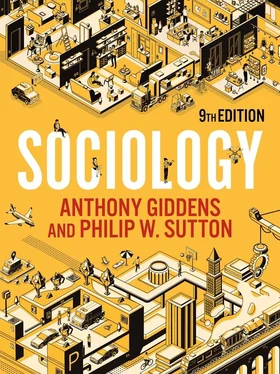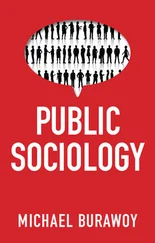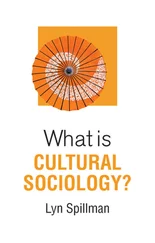However, during the collection of data, in the analysis of the evidence and in reporting the findings, they must strive to prevent their prior emotional and political commitments from influencing their judgement, which could result in bias. The research by Li et al. was collated and reported in this relatively ‘detached’ manner, even though the project was prompted by a desire to understand why many MSM shun the use of condoms and to help to change this. They showed that traditional cultural beliefs continue in the twenty-first century and advocated a combination of online social media and traditional community-based interventions to promote condom use.
What is evident from these two studies, over four decades apart, is that sociologists, being humans, are inevitably emotionally and politically involved , looking to understand, explain and offer solutions to the social problems of the day. But, during their research, they also strive for relative detachment from their personal beliefs, and achieving a productive balance between involvement and detachment is crucial to all good sociology (Elias 1987b). Yet this is not easy, and, as we shall see later, philosophers have long argued about whether detachment or ‘objectivity’ is even possible in the social science disciplines.
Next we look at some ethical dilemmas facing sociologists who are engaged in empirical research. We then explore what is meant by ‘science’ before investigating the nature of sociology as a distinct discipline. From here we move on to examine the research process and briefly summarize the most widely used research methods and their applications. The chapter concludes with a discussion on the uses of sociology in society. As we shall see, there are some significant differences between the ideal of scientific work and real-world studies that inevitably have to deal with numerous obstacles. A sensible way to think about sociological research is to see it, like all science, as the art of the possible.
Human subjects, ethical issues
All research concerned with human beings poses ethical dilemmas – matters of moral right and wrong – for researchers. In this respect, the social sciences face issues that most research in the natural sciences do not. Is it justifiable for researchers to deceive the people they study about what the research is really about? What steps have been taken to make sure that participants have given genuine informed consent to being involved – a particularly important issue in research with children and vulnerable social groups? How will researchers protect the privacy and anonymity of participants? How will personal information be stored and for how long? Is there any risk of participants experiencing negative effects from the research and, if so, how will this risk be managed? Thinking through the ethical implications of any proposed research is important because, unless a project team can satisfactorily address the ethical issues, it may not go ahead.
Humphreys’ methodology was criticized as unethical because his fieldwork was conducted covertly, without the genuine informed consent of those he studied. Ethical issues are more prominent today than in the past, and researchers are no longer seen as the only knowledgeable experts with participants as mere ‘subjects’ whose presence in the research process is strictly limited. Increasingly, the participants are themselves involved in the research process and may help to formulate questions, comment on the researcher’s interpretations, and receive a copy of the final research report.
As in many other relationships in social life (such as doctors and patients or university lecturers and students), ‘laypeople’ no longer automatically defer to ‘experts’ in the way they might have done one or two generations ago. This broader social process is transforming research practice. Indeed, funding bodies now routinely ask research teams to anticipate the ethical issues they may confront, suggest how they will deal with these, and confirm whether deception will be used, what measures are in place to protect participants from risks, and how findings will be fed back at the end of the study. Clearly, research practice is always embedded within a social and historical context which partly determines what can and cannot legitimately be studied.
In carrying out his research, Humphreys did not reveal his identity as a sociologist, and men who came into the tearoom assumed he was there for the same reasons they were. Although he did not tell direct lies, he also did not reveal the real reason for his presence. Was his behaviour legitimate? This aspect of the research did not put any of the men directly at risk, so perhaps it could be justified. What made Humphreys’ project more controversial was that he took down the vehicle licence plates of his subjects, obtained their home addresses from a friend at the Department of Motor Vehicles, and then visited their homes on the pretence of conducting an unrelated survey. How ethical was this element of the study? Could it ever be justified? Even though he did not reveal to the men’s families anything about the tearooms, the information he gathered could have been damaging. The same-sex activity he observed was illegal at the time, and police officers could have demanded the release of information on the men’s identities. It is also possible that a less skilled investigator could have slipped up when interviewing the families or that Humphreys’ notes could have been seen by others.
The methodology of Li et al. (2010) in Guangzhou, China, shows just how much research ethics and governance have changed since the 1970s. This team conducted semi-structured interviews to find out about participants’ biographies. Like Humphreys, they also used participant observation in various venues, including four public toilets, and one team member joined a volunteer outreach group in order to build relationships with the target communities. A sample was then recruited from these social networks. However, unlike Humphreys, the researchers openly engaged with the participants about the project, its goals and the way the information they gave would be handled: ‘After briefing about the objectives of the study, informed consent was obtained from the participants, who were assured of confidentiality, the use of pseudonyms, and safe storage of the data’ (ibid.: 1482).
Considering the number of things that could go wrong in the research process, researchers today do not consider Humphreys’ methods to be legitimate. Funding bodies such as the European Science Foundation and the UK’s Economic and Social Research Council (ESRC), as well as universities, have much stricter ethical guidelines and codes of practice than in the past. It is unlikely that covert research involving the deception of subjects would be officially sanctioned today. Yet Humphreys was one of the first sociologists to study a hidden aspect of social life, and his account was a humane treatment of the subject going well beyond the existing stock of knowledge.
Read the first two chapters of Humphreys’ Tearoom Trade and list his reasons for carrying out covert research rather than being open with his subjects. Which aspects of social life today are so difficult to access that we may never understand them by adhering to today’s stricter research norms? On what grounds might a proposal for covert research be justified?
The issues that concern sociologists are often those that worry other people. After all, sociologists are members of society too. Good research should help us to understand social life better and, quite often, to view it in new ways. Tearoom Trade provdes good examples of the kind of questions that sociologists ask. In looking at the activities that occur in public toilets, Humphreys found that something we take to be obvious – a public toilet – is actually socially constructed , depending on how people use it. Social constructionism is a perspective which begins from the premise that social reality is the product of interactions between individuals and groups, not something to be taken as ‘natural’ (see chapter 12, ‘Social Interaction and Daily Life’, and chapter 5, ‘The Environment’). In this case, what most people believed to be a public building with an obvious function was, for a particular group, primarily a venue for the pursuit of sexual activity.
Читать дальше












